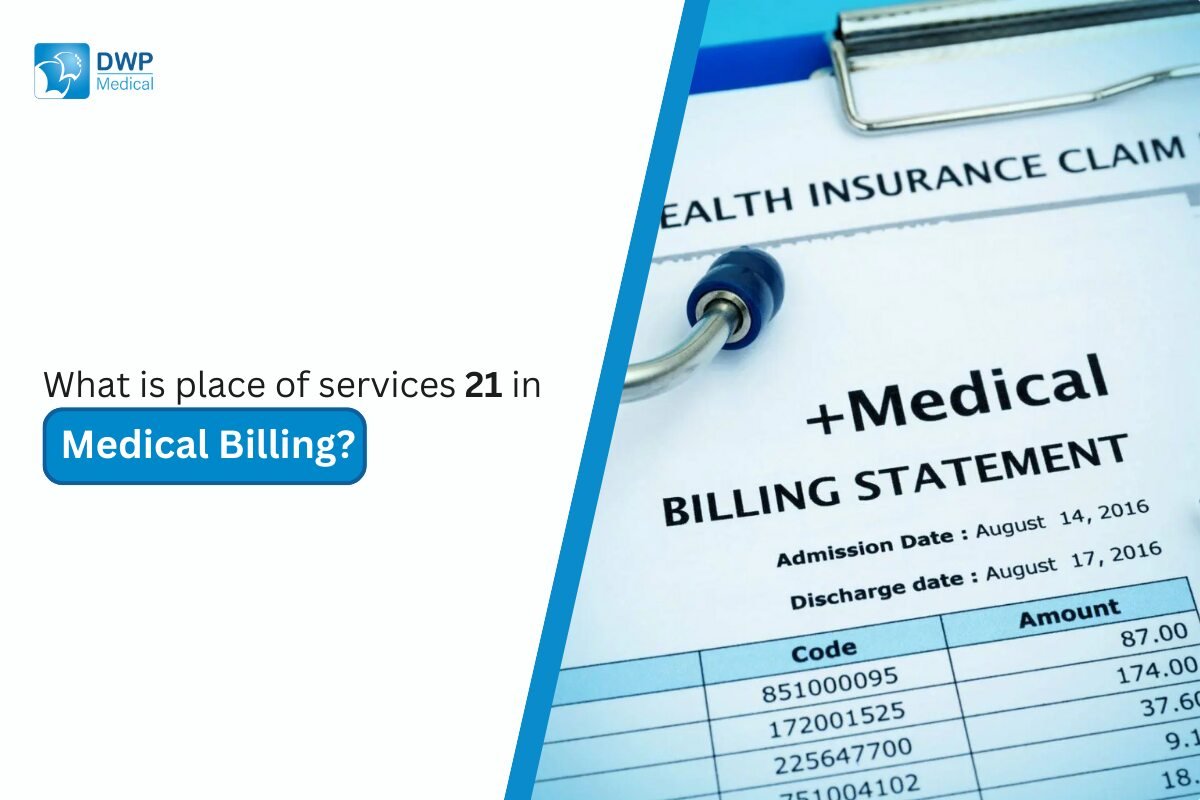Medical billing has many codes and numbers, but the major thing that helps minimize billing errors is a place of service codes.
So, you must have come across POS 21; what is it? When does billing staff use this code?
It’s a medical billing code specifically used when a doctor gives services to a patient who is officially staying in a hospital.
We will answer all your questions, so keep reading and learn about 21 POS in medical billing.
What is POS 21 in Medical Billing?
Place of Service 21 Description
Medical billing always utilizes the Place of Service 21 to identify hospital-based medical services within an inpatient facility. You can define POS code 21 as any medical facility that gives diagnostic and therapeutic medicine treatment, both surgical and non-surgical. Moreover, rehabilitation care for patients is under physician supervision according to their needs.
Importance of Accurate POS 21 Usage
After understanding the POS 21 description, we are now moving forward to the importance of the right use of this code. Healthcare providers and medical billing professionals must master the correct utilization of POS billing code 21.
The correct use of POS 21 maintains insurance payer approval for in-hospital treatments because it determines payment claims and adjusts reimbursement amounts. Multiple misclassifications occur when providers use POS code 21 to bill outpatient services despite the inaccuracy of this coding.
Hence, the result is delayed or denied claims. Thus, the combination of billing an office visit using POS code 21 leads to denial because the service location was entered incorrectly.
So, to get the proper reimbursement and avoid claim issues, healthcare providers must report service delivery locations accurately.
Main Uses Of 21 POS
Patients staying in a hospital and getting services require using the Place of Service 21 code for medical billing. The code serves as an essential factor in medical claims processing as well as healthcare reimbursement procedures. These are the main applications of medical code:
- The healthcare billing system uses this code to process payments for hospital patients officially admitted for their medical care. Moreover, they get diagnostic testing, surgeries, and treatment services.
- Insurance companies like Medicare and Medicaid use the POS 21 designation to determine the appropriate reimbursement rates for inpatient services because these rates exceed outpatient service rates.
- The use of proper POS codes maintains healthcare billing and service location conformity. Hence, avoids POS denial code 21 when reporting.
- The correct usage of this code allows healthcare providers to maintain exact patient documentation and medical records for both audits and insurance reviews.
What is Pos 11?
When medical staff deliver their services within their official office area, they should file the Place of Service code 11. You can say that office visit POS can be defined as any facility that a doctor gives at his office and not another place.
Hence, healthcare providers must apply POS 11 correctly because it signals insurance companies that medical services occur within an office setting, thus supporting the claim processing and reimbursement process.
What is Pos 22?
Patients can receive their medical services in an outpatient hospital facility through the POS code that matches code 22. Staff use this code after receiving outpatient care from their hospital’s main campus.
A distinction must be made between the application of POS 22 and POS code 21 since they address different settings regarding outpatient hospital care. The proper use of POS 22 allows accurate billing and reimbursement, representing the outpatient hospital where services took place.
POS 21 vs. POS 22
This is a table for better understanding:
| POS 21 | POS 22 | |
| Definition | Services are provided to patients who are admitted to a hospital for at least a night | Services are provided to patients in a hospital’s outpatient department when a patient isn’t admitted |
| Patient Status | Admitted inpatient | Outpatient (not admitted) |
| Reimbursement | Typically, it is higher due to the intensity and resources associated with inpatient care. | Generally lower, reflecting the less intensive nature of outpatient services. |
POS 11 vs. POS 21
| POS 11 | POS 21 | |
| Definition | Services provided in a healthcare professional’s office setting. | Services are provided to patients formally admitted to a hospital for at least an overnight stay. |
| Patient Status | Patients visit for routine check-ups, consultations, or minor procedures. | Admitted inpatient. |
| Reimbursement | Generally lower, reflecting the lower overhead costs of office-based services. | Typically, it is higher due to the complexity and resources required for inpatient care. |
Conclusion
Knowledge of Place of Service 21 is necessary for correct medical billing operations and reimbursement payments. This payment code targets services delivered to inpatient patients requiring hospital admission lasting more than 24 hours. Medical organizations can process insurance claims efficiently using POS 21 so healthcare providers will obtain proper payment for their services.
Moreover, healthcare providers and patients face adverse reimbursement issues when health professionals misuse their assigned POS coding systems. The correct identification of POS 21 from the other categories, POS 11 and POS 22, prevents payment mistakes. Thus, following it helps maintain the observance of healthcare rules.
You can expect precise and efficient claims processing through DWP Medical for smooth and accurate medical billing. Our team of experts takes care of coding procedures and regulatory requirements. Contact DWP Medical now to simplify your payment processing operations.


